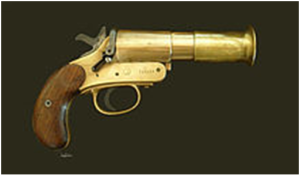Friday, March 26, 1915
In trenches, Rue Petillon
The Battalion War Diarist wrote for this day: “Heavy day. Many wounded. The 3rd Canadian Brigade was relieved by 24th British Brigade, the 14th was complimented by the G.O.C. 24th British Bde. for the quickness and accuracy with which the trenches were handed over. Left considerable quantity of trench property, such as periscopes, Very pistols, etc. with the Worcesters, and was questioned by 3rd Bde. as to why this was done. Worcesters had lost everything in the Battle of Neuve Chapelle a few days before, and it was impossible as well as dangerous to leave them without these stores. Battn. marched back to rest billets at Estaires, arriving about midnight.” .” [1]
THIS DAY IN RMR HISTORY: In fact on this day several men of the 14th were killed, and approximately a dozen wounded. “Previous to this activity, a patrol of the Royal Montreal Regiment in No Man’s Land had been fired upon by the enemy, Pte A. S. Jones falling and one other man being wounded. On receiving a report from the survivors of the patrol, a party of three men, under Sergt. Lang, went out to help Jones if he were still alive. They searched till dawn, but no trace of the fallen man could be found. Accordingly, on the Battalion records there was placed this entry: “Private A. S. Jones – Wounded and Missing.”[2]
Private Arthur Stanley Jones was officially declared “Missing” on March 26th, 1915. He was a 22 year old clerk, a native of Montreal, who has served 3 ½ years with the Victoria Rifles of Canada before enlisting in the 14th Bn. at Valcartier on Sept 22, 1914. His name is inscribed on the Vimy Memorial, Pas de Calais, France.

British Army, dated 1918; 1″ (25.4mm) calibre [3]
[1] War Diary, 14th Canadian Battalion, The Royal Montreal Regiment, March 26, 1915. Library and Archives Canada, Ottawa, http://data2.collectionscanada.ca/e/e044/e001089702.jpg
[2] R.C. Featherstonhaugh, The Royal Montreal Regiment 14th Battalion C.E.F. 1914-1925, Montreal, The Gazette, Printing Co., Ltd., 1927, pg. 32.
[3] Andy Dingley at…
http://en.wikipedia.org/wiki/Flare_gun#mediaviewer/File:Webley_%26_Scott_Mk_III_flare_pistol.jpg
[1] http://firearmshistory.blogspot.ca/2011/03/utility-firearms-flare-gun-or-very.html

